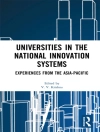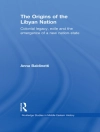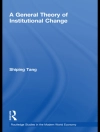Since its commercial introduction in 2004, UHPLC (Ultra-High Performance Liquid Chromatography) has begun to replace conventional HPLC in academia and industry and interest in this technique continues to grow. Both the increases in speed and resolution make this an attractive method; particularly to the life sciences and more than 1500 papers have been written on this strongly-evolving topic to date. This book provides a solid background on how to work with UHPLC and its application to the life sciences. The first part of the book covers the basics of this approach and the specifics of a UHPLC system, providing the reader with a solid background to working properly with such a system. The second part examines the application of UHPLC to the life sciences, with a focus on drug analysis strategies. UHPLC-MS, a key technique in pharmaceutical and toxicological analyses, is also examined in detail. The editors (Davy Guillarme and Jean-Luc Veuthey) were some of the earliest adopters of UHPLC and have published and lectured extensively on this topic. Between them they have brought together an excellent team of contributors from Europe and the United States, presenting a wealth of expertise and knowledge. This book is an essential handbook for anyone wishing to adopt an UHPLC system in either an academic or industrial setting and will benefit postgraduate students and experienced workers alike.
Tabella dei contenuti
1.1. Trends in HPLC;
1.2. Comparison of Chromatographic Techniques and Supports;
1.3. Constructing Kinetic Plots;
1.4. History of the Kinetic Plot Method;
1.5 Unification of the Isocratic and Gradient Kinetic Plot Method;
1.6. Relation between the Kinetic Performance under Isocratic and Gradient Elution Conditions;
1.7. Influence of the Test Conditions on the Obtained Kinetic-Performance Limit Curve;
1.8. Some Reflections on Recent Trends in Liquid Chromatography using the Kinetic Plot Method;
1.9. Conclusions;
Acknowledgements;
References;
2.1 UHPLC Instrumentation;
2.2 UHPLC Columns;
3.1 Introduction;
3.2 Qualitative Transfer from HPLC to UHPLC;
3.3 Normative Context for the HPLC to UHPLC Transfer;
3.4 Validation of UHPLC Methods and Equivalence of the HPLC-UHPLC Methods;
3.5 Conclusions;
3.6 References;
4.1 Introduction;
4.2 High throughput and high resolution in HT-UHPLC;
4.3 Limitations of HTLC and HT-UHPLC;
4.4 Advantage of high temperature in life science analysis;
4.5 HT-UHPLC in comprehensive on-line two-dimensional liquid chromatography (LC x LC);
4.6 Conclusion;
5. Comparison of the performance of totally porous and core-shell particles;
5.1. Introduction;
5.2. Column performance;
5.3. Possibilities of recent core-shell technology;
5.4. Particle size distribution and roughness of core-shell particles;
5.5. Loading capacity of core-shell particles;
5.6. Limited efficiency when core-shell particles packed in narrow-bore columns;
5.7. Extra column effects, contribution to band broadening;
5.8. Performance of core-shell and totally porous particles in isocratic elution mode;
5.9. Performance of core-shell and totally porous particles in gradient elution mode;
5.10. Conclusion;
6.1 Introduction;
6.2 Analytical Conditions for performing HILIC.;
6.3 Applications of HILIC in UHPLC.;
6.4 References.;
7.1 Introduction;
7.2 Selection of ionization techniques;
7.3 Overview of mass analyzers and their main features;
7.4 New developments in mass spectrometry applicable in UHPLC/MS;
7.5 Conclusions;
8.1 Introduction;
8.2 Solubility;
8.3 Ionization;
8.4 Lipophilicity;
8.5 Permeability;
8.6 Conclusion;
8.7 References;
9.1 Introduction;
9.2 UHPLC in Bioanalysis;
9.3 Sample preparation for UHPLC in bioanalysis;
9.4 Conclusions;
10.1 Introduction;10.2 GC-MS Analyses;
10.3 LC-MS(/MS) Analyses;
10.4 Application of UHPLC-MS(/MS) for Drug Testing in Sports;
10.5 Conclusion;
References;
11.1 Introduction;
11.2 Use of UHPLC for the Analysis of Seized Drugs;
12.1. Pharmaceuticals as environmental contaminants;
12.2. Analysis of pharmaceuticals in environmental samples;
12.3. Occurrence of pharmaceuticals in environmental and wastewater samples;
12.4. Conclusions;
Acknowledgements;
References;
13.1 Introduction;
13.2 Multiple Facets of UHPLC in NP research;
13.3 Fast Targeted Analysis;
13.4 Fast Non-Targeted Analysis, Fingerprinting, and Metabolomics;
13.5 High-Resolution Profiling and Metabolite ID;
13.6 Conclusion;
Acknowledgments;
References;
14.1. Introduction;
14.2. Pre-analysis Considerations: Protocol Design, Sample Collection, Storage and Preparation;
14.3. Sample Preparation for Serum and/Plasma;
14.4. Collection and Storage of Urine Samples;
14.5. UHPLC-MS-Based Metabolite Profiling;
14.6. Applications of UHPLC-MS to Human Metabolic Profiling Studies;
14.7 Current Challenges for UHPLC-MS in Global metabolic profiling Studies;
14.8. Conclusions
Circa l’autore
Davy Guillarme gained his Ph D in analytical chemistry from the University of Lyon (France) in 2004. He is now lecturer at the School of Pharmaceutical Sciences, University of Geneva (Switzerland). He is working mainly on the development of new approaches to perform ultra-fast and high resolution separations in liquid chromatography. He is also interested in the coupling of these strategies with alternative detection modes, particularly mass spectrometry. Jean-Luc Veuthey obtained his Ph D in analytical chemistry from the University of Geneva (Switzerland) in 1987. He is now full professor at the School of Pharmaceutical Sciences, University of Geneva (Switzerland). His interests include the development of LC and CE hyphenated to several detection modes for the analysis of drugs and metabolites. Sample preparation and validation of the procedures are also particularly studied in his laboratory.












